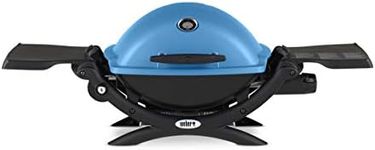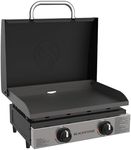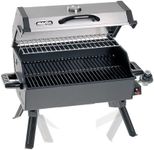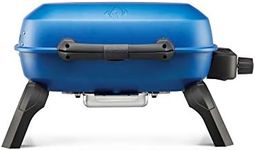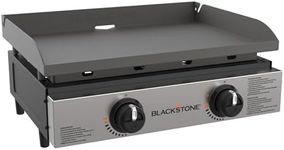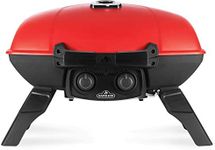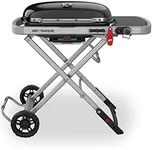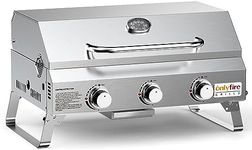Buying Guide for the Best Tabletop Propane Grills
Choosing a tabletop propane grill can be a fun process, especially if you enjoy outdoor cooking or need a portable solution for camping, tailgating, or small patios. The key is to think about how and where you’ll use the grill most often. Consider the size of your gatherings, the types of food you like to cook, and how much space you have for storage and transport. By understanding the main features and how they relate to your needs, you’ll be able to pick a grill that makes your outdoor cooking easy and enjoyable.Cooking Surface AreaThe cooking surface area refers to the total space available for grilling food, usually measured in square inches. This is important because it determines how much food you can cook at once. Smaller grills (under 200 square inches) are great for 1-2 people or quick meals, while medium grills (200-300 square inches) suit small families or groups. Larger surfaces (over 300 square inches) are better for entertaining or cooking multiple items at once. Think about how many people you usually cook for and what types of food you like to grill—if you often cook for a crowd or want to grill larger items like whole chickens, a bigger surface is helpful.
BTU RatingBTU stands for British Thermal Unit and measures the amount of heat the grill can produce. A higher BTU means more heating power, but it’s not just about the number—the efficiency and design of the grill matter too. Low BTU grills (under 8,000) are suitable for simple grilling and small meals, while mid-range (8,000-12,000) works for most users. High BTU (over 12,000) is best if you want to sear meats or cook quickly. Consider what you like to cook: if you want fast, high-heat grilling or searing, look for a higher BTU, but for gentle cooking or portability, a lower BTU may be enough.
Portability and WeightPortability and weight refer to how easy it is to move and transport the grill. Lightweight grills (under 20 pounds) are easy to carry for camping or tailgating, while heavier models (over 30 pounds) may offer more features but are less convenient to move. If you plan to take your grill on the go, look for compact, lightweight designs with handles or carrying cases. If it will mostly stay in one place, weight is less of a concern.
Build MaterialThe build material affects the grill’s durability, heat retention, and ease of cleaning. Common materials include stainless steel, cast iron, and coated steel. Stainless steel is rust-resistant and easy to clean, making it a good choice for outdoor use. Cast iron retains heat well but is heavier and needs more care to prevent rust. Coated steel is affordable but may not last as long. If you want a long-lasting, low-maintenance grill, stainless steel is a safe bet. If you prioritize heat retention and don’t mind extra care, cast iron is worth considering.
Ignition SystemThe ignition system is how you light the grill. Most tabletop propane grills use either a push-button (piezo) ignition or require manual lighting with a match or lighter. Push-button ignitions are more convenient and safer, especially for beginners. Manual ignition is simple but requires extra care. If you want quick, hassle-free starts, look for a grill with a reliable push-button ignition.
Temperature ControlTemperature control refers to how easily you can adjust the heat while cooking. Some grills have a single burner with basic control, while others offer multiple burners or adjustable knobs for more precise cooking. If you like to cook a variety of foods or want to try indirect grilling, look for a grill with good temperature control options. For simple grilling, a single control may be enough.
Ease of CleaningEase of cleaning is about how simple it is to keep your grill tidy after use. Features like removable drip trays, non-stick grates, and accessible parts make cleaning easier. If you grill often or dislike scrubbing, look for models with these features. If you don’t mind a bit of extra work, cleaning may be less of a concern.
